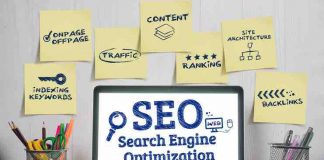
If you’re an OFW living in the U.S and have a Small Business, then you should definitely read this. 401(K) for Small Business owners is crucial. Saving for retirement is an investment into the future, a key aspect of managing a small business is by making plans for retirement, for you and your employees. It is also an effective way of assuring your employees that you have their best interests at heart.
There are several retirement investment options, and it could get confusing trying to find which best fits your business in relation to its goals and target.
401K plans provide more options and flexibility compared to other retirement plans. However, the best 401(k) for your business will vary depending on the type of small business you have; seeing that every plan has its pros and cons and most likely favors one business over another.
In this article, we will be discussing these options, their advantages over others, and of course disadvantages. We would go ahead and give a step-by-step guide on how best to set up your 401K plan for your small business.
STEPS TO GETTING A 401K FOR YOUR SMALL BUSINESS
Let’s walk through some very easy steps to securing a 401k plan for your small business, these are carefully divided into 4 steps. They are;
- Choose a plan that best fits your business
- Choose a suitable team
- Document it and Make it official
- Keep it afloat
STEP 1. Choose a plan that best suits your business
In order to find a plan that best fits your business goals, we would look at the options we have, identify the pros and cons and choose which one we may be most comfortable with depending on our goals and plans.
Types of 401k plans available for small businesses
The different types of 401(k) available for small businesses are;
-
Individual 401(K) Plan
This is also known as a self-employed or solo 401(k) plan, and as the name implies is designed exclusively for sole proprietorship or partners who do not have employees.
Advantages: The benefits of this plan are quite numerous for a small business owner as it allows you to contribute more towards your retirement more than would be possible with other plans.
Disadvantages: When the need arises to hire employees (as it would if you desire substantial growth), you would need to transition to another 401k plan that more suits your company.
Additionally, the responsibility of the paper works may be very cumbersome and it must be done by the owner(s) of the small business.
-
Traditional 401k plan
This is a 401k plan sponsored by the employer of a business, and it gives its employees varieties of investment options. The employers decide whether or not to match the employees’ contribution.
Advantages: it is very flexible as it allows small business owners to choose to decrease employee’s contributions or raise.
Disadvantages: it is a very expensive administrative cost since it is subject to much testing, and there is also a risk of losing its tax-qualified status if the plan is not kept compliant.
-
Simple 401(k) Plan
In the simple 401k plan, eligibility is based on whether your business has less than 100 employees who have been compensated with at least $5,000 within the previous year. Its plan fairly blends with a simple IRA and a traditional 401k plan, however, because it has features that appear in both plans.
Advantages: It is very easy to put in place and administer, unlike the traditional 401k plan, as you would not be requested to go through rigorous testing which could be really expensive too.
Disadvantages: You cannot save as aggressively as you may want to with the simple 401k plan since the amount that can be contributed is lower than that of the traditional 401k plan. Furthermore, the employee is also entitled to all the funds in their simple 401k account, this is referred to as “immediate vesting”
-
Safe Harbor 401(k) Plan
Safe Harbor 401k plan is similar to the simple 401k plan, in that it does not undergo testing. It enables employees to contribute a percentage of their salary with each paycheck which is added with the employers’ contribution.
Advantages: As earlier stated, this plan does not require as much testing as a traditional 401k plan, so it is not as expensive hence less complicated to the business owner.
Disadvantages: Safe harbor 401k contribution plans may be higher than that of other 401k plans and thus might not be the right choice for newer businesses.
After you must have accessed these options and chosen which best suits our business, you would go ahead to;
Step 2: Choose a suitable team
Since there are a lot of services to be rendered when setting up your plan, it is only suitable to select a team of professionals with regards to the services they can provide.
This body (team) handles your record-keeping, compliance testing, dad to day plans and administration, and lots more. This relieves you as a small business owner from the task of keeping track of so much at a time just to manage a 401k plan.
A small business requires a great deal of record-keeping; from contributions, earnings, expenses, losses through plan investments, and benefit distribution. This is a lot to keep track of. Thus the 401k record keepers are responsible for the above and more.
Step 3: Document it and Make it Official
Once you’ve settled on your plan types and features, you would need to create a written plan document that, according to the IRS, stands as the foundation for the day-to-day plan operation/execution. It is an indication of the benefits, rights, and features under your plan.
Your plan documents would include the following;
- When employees would be eligible to participate
- Information on vesting schedules
- Employer’s matching details
- How distributions are handled
- Contact information for the employer and lots more
It is important to get this information right and make it readily available when there is a need to prove compliance during an audit.
For many plans, it is required that the employees eligible are informed about a 401k plan before it takes effect. It is advised that they be notified 30 days in advance.
In addition, it’s advised that the employees are given a thorough rundown of your retirement plan, it could be tagged as “retirement 101”.
After all these issues are looked at and carefully addressed, it is essential to lastly keep it afloat.
Step 4: Keep it afloat
You must keep a close eye on the 401k plan compliance deadlines so you don’t transgress the ERISA and IRS rules as this may be of severe consequence. This is majorly for those 401k plans that run nondiscrimination testing each year.
Adding to keeping up with compliance testing rules and deadlines, you’ll need to file an IRS Form 5500 each year. It is a federally-mandated form and includes information about your business, the number of participants, your retirement plans, and more.
Lastly, you would need to inquire about setup fees, monthly fees, Form 5500 fees, annual fees, and whether a provider expects you to pay fees to any other individual.
In all, it is essential to go for what suits your business best. In that, you may be able to achieve the phrase that says; “Small business, big savings”.
Want to read more of our posts? Check out our article about starting a business in the U.S.




